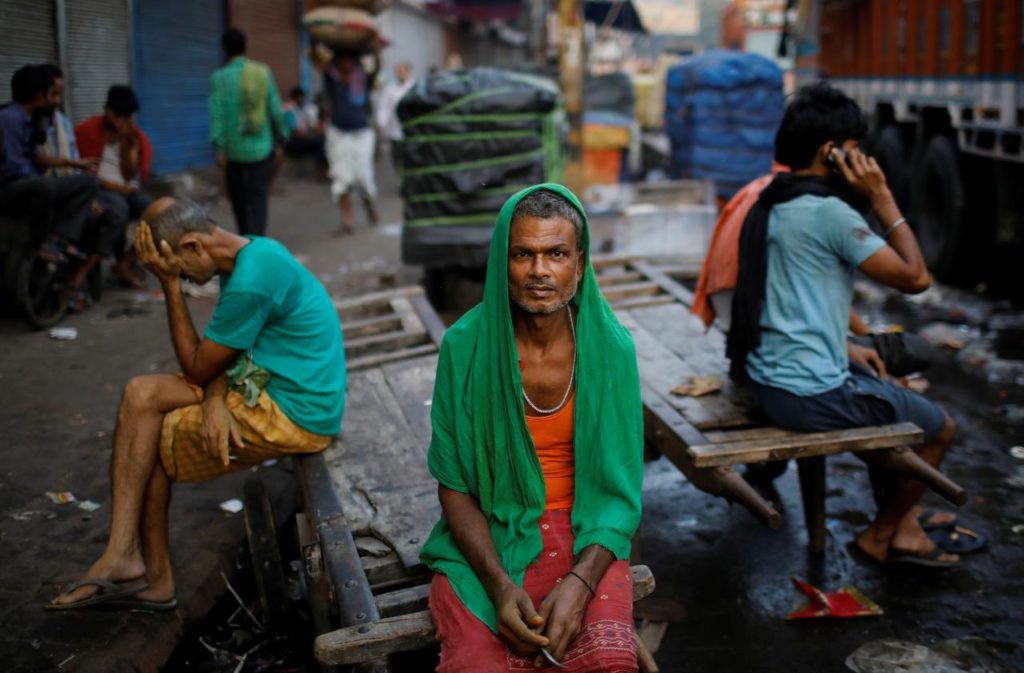‘Govt Is Forcing Digitalisation, Using It In Order To Undermine MGNREGA’
Oct 7, 2023 | Pratirodh Bureau
FILE PHOTO: Migrant labourers sit on a handcart as they wait for work at a wholesale market (Representative Image)
On Saturday, the Congress again took a swipe at the BJP, accusing it of forced digitalisation in the name of transparency. The grand old party of Indian politics also accused the BJP of using it as a tool to discourage demand for the Mahatma Gandhi National Rural Employment Guarantee Act (MGNREGA).
Congress general secretary Jairam Ramesh, in a post of X, said, “On the one hand, 48 per cent of all vehicle sales in India during April-Sept 2023 were of SUVs. On the other hand, in the first 6 months of this financial year itself, the Rs. 60,000 crore budgeted under MGNREGA for the year 2023-24 has been exhausted.”
Ramesh added, “This not only clearly indicates the deepening rural distress and rising inequality across the country, but also demonstrates the Modi government’s priorities which is indirectly suppressing demand for MGNREGA work by inordinately delaying wage payments.”
Ramesh, who is also a Rajya Sabha member, said while slamming the government, “To make matters worse, the Modi government has forced digitalisation in the name of transparency, while actually using it as a tool to discourage demand for MGNREGA among those who genuinely need the programme.”
The Congress has, over the years, been critical of the government for its decision to reduce the budget for MGNREGA across the country. It has also been raising the issue of inflation and unemployment.
The Mahatma Gandhi National Rural Employment Guarantee Act 2005 or MGNREGA, earlier known as the National Rural Employment Guarantee Act or NREGA, aims to guarantee the ‘right to work’. This act was passed on 23 August 2005 and was implemented in February 2006 under the UPA government of Prime Minister Manmohan Singh, following tabling of the bill in parliament by the Minister for Rural Development Raghuvansh Prasad Singh.
It aims to enhance livelihood security in rural areas by providing at least 100 days of wage employment in a financial year to at least one member of every household whose adult members volunteer to do unskilled manual work. Women are guaranteed one third of the jobs made available under the MGNREGA. Another aim of MGNREGA is to create durable assets (such as roads, canals, ponds and wells). Employment is to be provided within 5 km of an applicant’s residence, and minimum wages are to be paid. If work is not provided within 15 days of applying, applicants are entitled to an unemployment allowance. That is, if the government fails to provide employment, it has to provide certain unemployment allowances to those people. Thus, employment under MGNREGA is a legal entitlement.
Apart from providing economic security and creating rural assets, other things said to promote NREGA are that it can help in protecting the environment, empowering rural women, reducing rural-urban migration and fostering social equity, among others.
The act was first proposed in 1991 by then Prime Minister P.V. Narasimha Rao. It was finally accepted in Parliament and commenced implementation in 625 districts of India. Based on this pilot experience, NREGA was scoped up to cover all the districts of India from 1 April 2008. The statute was praised by the government as “the largest and most ambitious social security and public works program in the world”.
In 2009, the World Bank had chided the act, along with others, for hurting development through policy restrictions on internal movement. However, in its World Development Report 2014, the World Bank termed it as a “stellar example of rural development”.
MGNREGA is to be implemented mainly by gram panchayats (GPs). The law stated it provides many safeguards to promote its effective management and implementation. The act explicitly mentions the principles and agencies for implementation, list of allowed works, financing pattern, monitoring and evaluation, and detailed measures to ensure transparency and accountability.
